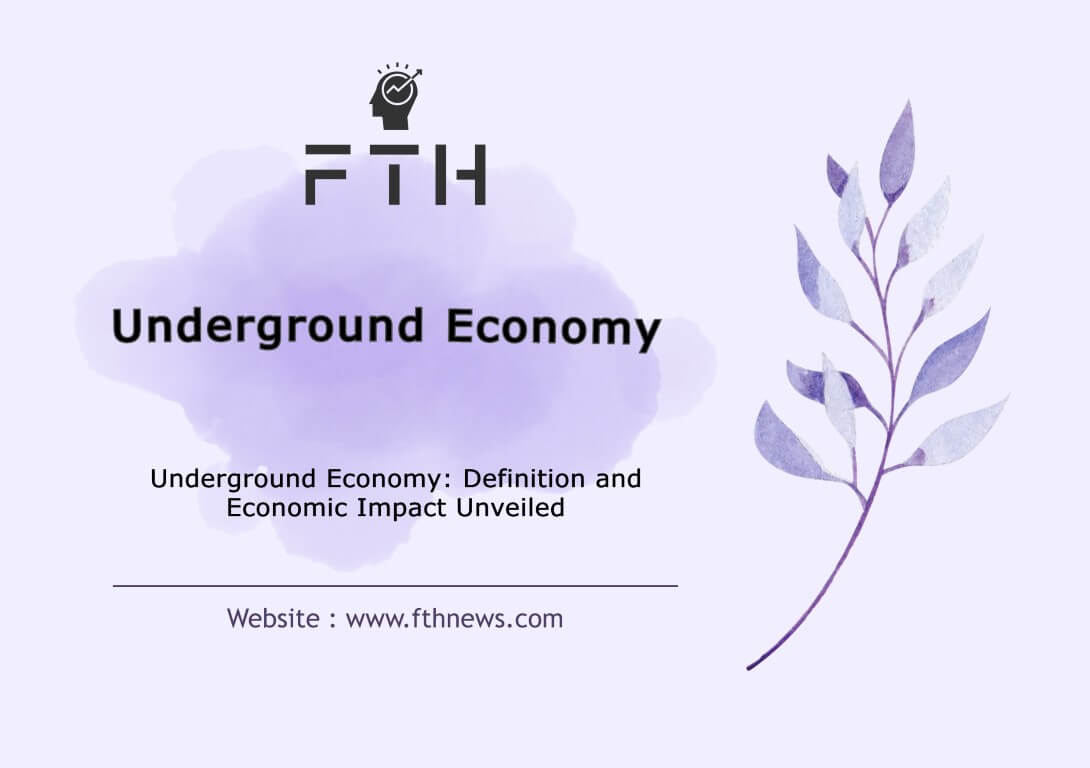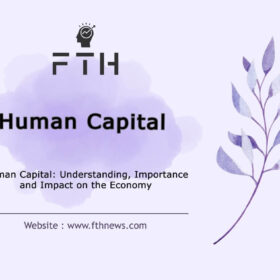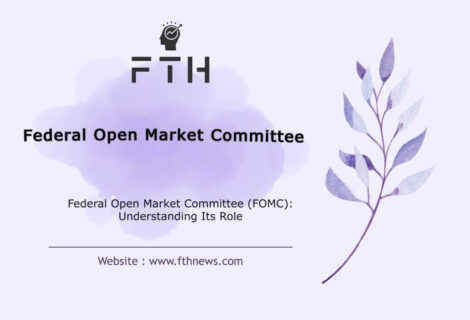
Underground Economy: What It Is and Its Impact in the Economy
In the intricate web of global economics lies a shadow realm—vividly known as the underground economy. This clandestine domain, operating beyond the scrutiny of official oversight, weaves a tapestry of unreported transactions, unregistered employment, and illicit trade. Let’s delve deeper into this cryptic world to understand its definition, implications, and the impact it casts on conventional economic structures.
What is the Underground Economy?
The underground economy, shrouded in ambiguity, encompasses a multitude of off-the-grid financial activities. It’s characterized by income not disclosed to tax authorities, ranging from unreported wages and untaxed earnings to illegal trade in narcotics, human trafficking, counterfeiting, and more.
This covert marketplace thrives on anonymity, escaping the gaze of governmental regulation.
Scale and Statistics
Estimating the scale of this hidden realm remains a formidable challenge. However, the OECD approximates that in some countries, the underground economy might constitute up to 20-30% of the GDP, highlighting its substantial impact on traditional economic metrics.
Economic Impacts on GDP
The repercussions of a thriving underground economy are profound. It undermines the accuracy of economic data, impacting GDP calculations, taxation, and fiscal policies. Unaccounted transactions skew market analyses, hampering the ability to implement effective economic strategies and policies.
How a Large Underground Economy Affects GDP
The GDP, a fundamental indicator of a country’s economic health, gets significantly influenced by the unreported financial activities of the underground economy. The omission of such substantial economic input distorts the true representation of a nation’s economic standing, affecting policy decisions and economic planning.
Undermining Economic Metrics
The shadow economy not only distorts GDP but also impacts employment data and public finance records. It blurs the precise assessment of unemployment rates and distorts public revenue figures, complicating fiscal planning.
Challenges and Solutions
Tackling the underground economy poses a formidable challenge. It necessitates a multifaceted approach encompassing stringent regulatory measures, fostering trust in formal financial systems, and addressing the root causes compelling economic activities into the informal sector.
Policy Measures and Social Impact
In addition to regulatory efforts, social policies to incentivize formal employment, enhance financial literacy, and reduce barriers to entry in the formal economy are crucial in curbing the expansion of underground economic activities.
Types of Black Economy
understanding the different types of the black economy provides a comprehensive view of its nuances. Here’s an organized breakdown of the distinct types:
1. Illegal Economy
- The illegal economy encompasses income generated from activities conducted in violation of legal regulations. These activities defy the boundaries established by legal business practices. Actions such as extortion and drug sales are part of this illicit economy, contravening administrative laws.
2. Unreported Economy
- The unreported economy operates with the aim to circumvent financial regulations outlined by institutions, particularly tax codes. It includes under-the-table employment and transactions designed to evade taxation and reporting requirements.
3. Unregistered Economy
- In this economy, economic activities deliberately sidestep institutional regulations. They bypass the reporting mandates stipulated by government agencies. This avoidance might occur due to intentional concealment of information, serving legal or illegal motives, or due to challenges in data collection processes.
4. Informal Economy
- Economic activities in the informal economy deliberately avoid standard operational costs and remain excluded from both legal and regulatory benefits. This encompasses activities related to family and administrative affairs that escape the purview of laws governing property relations, business licenses, and social security systems. Examples include household services exchanged between acquaintances and non-market activities.
Understanding these distinctions sheds light on the intricate layers of the black economy and its varying forms, each with its own methods and implications in the economic landscape.
Global Dynamics of the Underground Economy
A 2018 International Monetary Fund study investigated the shadow economic activities across 158 countries from 1991 to 2015. The findings revealed compelling insights into the size and variability of these clandestine financial systems.
Comparative Analysis of Global Shadow Economies
The mean value of the size of shadow economies across nations stood at 31.9%. Among the three countries with the largest shadow economies were Zimbabwe (60.6%), Bolivia (62.3%), and Georgia (64.9%). In contrast, nations like Austria (8.9%), the United States (8.3%), and Switzerland (7.2%) exhibited the smallest shadow economies.
Impact of Underground Economies
The consequences of underground economies vary considerably. In developing countries with extensive shadow economies, uncollected tax revenue can impede economic growth and hinder public program development. However, in other scenarios, participants in the underground economy retaining income that would typically be taxed can actually spur overall economic activity and drive demand, particularly in cases where corrupt government officials might have mismanaged those revenues.
Understanding the Definition of “Underground”
Activities considered part of the underground economy differ based on jurisdictional laws. For instance, while some countries prohibit alcohol, others permit legal brewery, distillery, and distribution operations. Similarly, drug legality varies, with certain countries and an increasing number of U.S. states legalizing the sale and use of cannabis.
Evolution of Views on Cannabis
The history of cannabis in the United States traces back to the early 1900s when Mexican immigrants introduced recreational marijuana use. During the Great Depression, concerns about marijuana consumption, combined with racial biases, led to its prohibition in 29 U.S. states by 1931. Despite this, many continued to buy and sell it illegally. Later studies refuted its association with crime, suggesting therapeutic benefits in treating ailments like cancer and AIDS.
Current Status of Cannabis Legalization
By 2022, 37 states and the District of Columbia had legalized medical cannabis, extensively available in various products. Additionally, 18 states and D.C. permitted non-medical regulated cannabis use.
Scope of Underground Transactions
Various transactions fall within the umbrella of the underground economy, including unreported income from activities like babysitting, where earnings surpass $400 annually (as of 2022) and should be reported for taxation.
Under-the-Table Transactions
Approximately 53.2% of cigarette sales in New York State in 2018 were conducted through underground economic channels to evade high sin taxes, despite the legal status of tobacco.
Diverse Underground Economic Activities
Beyond unreported income, underground economies encompass untaxed physical goods sales, smuggling to avoid border duties, human trafficking, illegal markets for copyrighted materials, endangered animal species, antiquities, and illicit human organ trade.
The Elusive Scale of Underground Economies
Quantifying the true magnitude of underground economies poses a significant challenge due to their secretive nature. With no governmental oversight, these economic activities evade tax reporting and official statistical documentation. Nonetheless, tracking unrecorded expenditures offers a glimpse into the statistical estimation of this obscured realm.
The American Underground Economy: An Evolving Landscape
In 2009, the American underground economy was estimated at a staggering $1 trillion, accounting for roughly 8% of the U.S. GDP. By 2013, following the aftermath of the 2008 financial crisis and the subsequent shrinkage of the formal economy, underground economic expenditures surged to an estimated $2 trillion. Subsequent estimates suggest that the U.S. underground economy expanded, comprising approximately 11% to 12% of the GDP, reflecting a colossal $2.5 trillion in 2021.
Evolving Trends and Impact on GDP
The trajectory of the American underground economy indicates a substantial surge over the years, reflecting both the resilience and the vulnerability of such hidden financial activities. This expansion significantly distorts the true representation of the country’s economic output and influences policy-making and economic planning.
Implications on Formal Economic Structures
The exponential growth of the underground economy not only challenges traditional economic measurements but also poses a dilemma for regulatory bodies and policymakers. The unreported economic activities cast a shadow on accurate GDP calculations, tax revenue, and the formulation of effective economic policies.
The evolving landscape of clandestine economic activities in the U.S. serves as a testament to the dynamic interplay between formal and underground economic sectors, warranting a closer examination and strategic intervention to curtail the expanding influence of the shadow economy.
Global Dynamics of the Underground Economy
A 2018 International Monetary Fund study investigated the shadow economic activities across 158 countries from 1991 to 2015. The findings revealed compelling insights into the size and variability of these clandestine financial systems.
Comparative Analysis of Global Shadow Economies
The mean value of the size of shadow economies across nations stood at 31.9%. Among the three countries with the largest shadow economies were Zimbabwe (60.6%), Bolivia (62.3%), and Georgia (64.9%). In contrast, nations like Austria (8.9%), the United States (8.3%), and Switzerland (7.2%) exhibited the smallest shadow economies.
Impact of Underground Economies
The consequences of underground economies vary considerably. In developing countries with extensive shadow economies, uncollected tax revenue can impede economic growth and hinder public program development. However, in other scenarios, participants in the underground economy retaining income that would typically be taxed can actually spur overall economic activity and drive demand, particularly in cases where corrupt government officials might have mismanaged those revenues.
Understanding the Definition of “Underground”
Activities considered part of the underground economy differ based on jurisdictional laws. For instance, while some countries prohibit alcohol, others permit legal brewery, distillery, and distribution operations. Similarly, drug legality varies, with certain countries and an increasing number of U.S. states legalizing the sale and use of cannabis.
Evolution of Views on Cannabis
The history of cannabis in the United States traces back to the early 1900s when Mexican immigrants introduced recreational marijuana use. During the Great Depression, concerns about marijuana consumption, combined with racial biases, led to its prohibition in 29 U.S. states by 1931. Despite this, many continued to buy and sell it illegally. Later studies refuted its association with crime, suggesting therapeutic benefits in treating ailments like cancer and AIDS.
Current Status of Cannabis Legalization
By 2022, 37 states and the District of Columbia had legalized medical cannabis, extensively available in various products. Additionally, 18 states and D.C. permitted non-medical regulated cannabis use.
Scope of Underground Transactions
Various transactions fall within the umbrella of the underground economy, including unreported income from activities like babysitting, where earnings surpass $400 annually (as of 2022) and should be reported for taxation.
Under-the-Table Transactions
Approximately 53.2% of cigarette sales in New York State in 2018 were conducted through underground economic channels to evade high sin taxes, despite the legal status of tobacco.
Diverse Underground Economic Activities
Beyond unreported income, underground economies encompass untaxed physical goods sales, smuggling to avoid border duties, human trafficking, illegal markets for copyrighted materials, endangered animal species, antiquities, and illicit human organ trade.
Is the Existence of an Underground Economy Necessary?
In specific circumstances, the underground economy becomes the sole recourse for obtaining essential goods or services. For instance, in remote or underserved areas, the underground economy might be the only available means of acquiring vital items, such as infant formula or scarce life-saving medications.
Instances of Necessity:
- Imagine being in a secluded area where conventional stores lack crucial items, making the underground economy the sole avenue for procurement.
Operation of the Underground Economy
Diverse forms of the underground economy operate, from physical exchanges on street corners to online platforms facilitating transactions through digital currencies.
Disadvantages of the Underground Economy
1. Impact on Economic Indicators
- Unrecorded transactions in the underground economy lead to errors in assessing macroeconomic indicators, such as unemployment rates and societal welfare.
2. Reduction in Government Revenue
- The unreported nature of underground economic activities diminishes tax revenue, affecting government investments and societal welfare programs.
3. Price Inflation and Quality Concerns
- Lack of oversight in the underground economy results in inflated prices and compromised goods, with restricted items often sold at significantly higher prices than their actual value.
While the underground economy caters to immediate needs, its operation raises significant challenges, impacting economic indicators, government revenue, and consumer well-being, highlighting concerns about unregulated trade in goods and services.
Conclusion
The clandestine underbelly of the economy, the underground economy, continues to be a complex and enigmatic aspect of global financial systems. Its impact resonates across economic, social, and political landscapes, demanding proactive measures to mitigate its influence and integrate its operations into the formal economic framework.
As we navigate the intricacies of economic structures, acknowledging and understanding the nuances of the underground economy becomes imperative for shaping resilient and transparent financial systems.
FAQ
The underground economy comprises unreported income from activities such as under-the-table employment and untaxed private transactions. It also includes illegal trade in drugs, contraband goods, and unregistered economic activities that evade government oversight.














